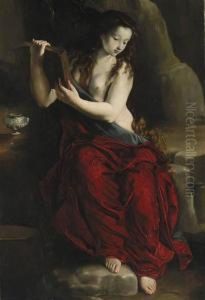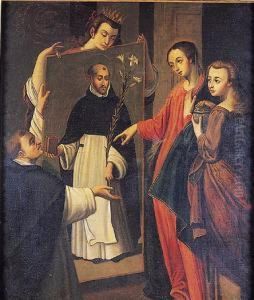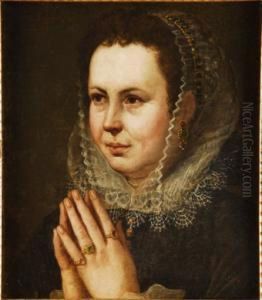Juan Bautista Mayno Paintings
Juan Bautista Maíno was a Spanish painter of the Baroque period, considered one of the first great Spanish followers of Caravaggio. Born in 1569 in Pastrana, Spain, Maíno spent his early years in a town which was also the location of a significant Ducal Palace. It is believed that the artistic environment around this palace, along with the religious influence of his Dominican uncle, may have sparked Maíno's interest in painting.
Maíno's early artistic education is not well documented, but it is known that he traveled to Italy around 1605, where he stayed for about 10 years. During his time in Italy, he was particularly influenced by the works of Caravaggio and the Bolognese School. The dramatic use of chiaroscuro and realistic depictions of figures in his later works reflect this influence.
Upon returning to Spain in the mid-1610s, Maíno was appointed as a painter to the king and began to receive significant commissions. One of his most notable works from this period is the 'Adoration of the Shepherds', created for the convent of San Pedro Mártir in Toledo. This masterpiece is exemplary of his skilled use of light and shadow to create a sense of depth and volume.
Throughout his career, Maíno also demonstrated a keen interest in accurate detail and color, which can be seen in his religious paintings as well as in his few known portraits. His work was characterized by a combination of realism and spirituality, with an emphasis on humane and emotional expressions.
Maíno's influence was not limited to his paintings; he also played a significant role as a teacher, with students who would become prominent painters in their own right. In the latter part of his life, he joined the Dominican Order and continued to paint religious-themed works.
Maíno died in 1649 in Madrid. His legacy is that of a transitional figure in Spanish art, bridging the gap between the late Mannerist and early Baroque styles, and paving the way for later Spanish masters like Velázquez and Murillo.


